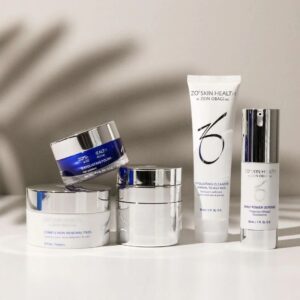Circumcision, the surgical removal of the foreskin covering the tip of the penis, has evolved significantly over centuries. Originating as an ancient ritual, this practice has transitioned into a medical procedure with advancements in techniques and safety.
A study by the World Health Organization reveals that approximately 30% of males worldwide are circumcised, showcasing its prevalence. This article delves into the evolution of circumcision methods, from traditional practices to the sophisticated medical approaches of modern medicine. We aim to explore what is circumcision and how circumcision has naturally become a part of cultural and medical landscapes, providing insights into its significance and the technological progress that has shaped its current practices.
Ancient Circumcision Practices
Circumcision in ancient times was more than a medical procedure; it was deeply rooted in cultural, religious, and social traditions. These practices varied widely across different civilizations, each with unique methods and significance.
Stone Knife Technique
The Stone Knife Technique is one of the oldest methods of circumcision, dating back to the prehistoric era. Practitioners used sharp flint or obsidian knives to perform the procedure, valuing these materials for their precision and sharpness. This method was a test of bravery and endurance for young males in various cultures and a rite of passage into adulthood.
Mogen Clamp Method
The Mogen Clamp, although not as ancient as stone tools, represents a significant advancement in circumcision techniques. Originating in Jewish tradition, this method involves using a specialized clamp to protect the glans and pull the foreskin forward to be excised. The Mogen Clamp technique is highly valued for its efficiency and the reduced risk of injury.
Periah Method
The Periah method is a traditional Jewish circumcision technique that involves the complete removal of the foreskin and the exposure of the glans. This practice is ancient, with roots in biblical times, and is still widely used in Jewish communities today. The procedure is highly ritualized, often performed by a trained religious figure known as a mohel on the eighth day after birth, emphasizing its deep religious significance.
Islamic Way of Circumcision
Sunnah circumcision, practiced within Islamic culture, is considered both a religious and health-related procedure. Performed widely across Muslim-majority countries, this practice is recommended to be done at a young age, ranging from infancy to before puberty. The method involves the removal of the foreskin but varies in technique based on regional and cultural differences.
Modern Circumcision Practices
Modern circumcision practices have significantly evolved from their ancient predecessors, focusing on patient safety, precision, and minimizing discomfort. These advancements have led to the development of various techniques widely used today.
Mogen Clamp Technique
The Mogen Clamp Technique utilizes a specialized instrument known as the Mogen clamp. This method is characterized by its efficiency, resulting in minimal bleeding and quick recovery times. The clamp’s design allows for the foreskin to be removed swiftly and with precision, making it a preferred choice in modern medical settings for its speed and reduced risk of complications.
Gomco Clamp Technique
The Gomco Clamp Technique involves a more intricate device than the Mogen clamp. This method uses a bell-shaped apparatus to hold the foreskin before it is excised securely. The Gomco clamp is known for its reliability and has been widely adopted due to its ease of use and the high level of control it offers practitioners. It is a testament to the technological advancements in circumcision practices, providing a safe and effective solution for foreskin removal.
Plastibell Technique
The Plastibell Technique is another modern method that involves fitting a small plastic ring over the glans, under the foreskin. This ring then acts as a guide for circumcision, ensuring a clean cut around the foreskin. The Plastibell is left in place until the foreskin naturally detaches, usually within a week. This method is prevalent for infant circumcisions due to its simplicity and the minimal aftercare required.
Shang Ring Technique
The Shang Ring Technique is a newer, innovative approach to circumcision that involves the use of a two-part, disposable device. This method is designed for simplicity and safety, significantly reducing the procedure’s time and the risk of complications. The Shang Ring clamps the foreskin, which is then cut away, and the device remains in place for about a week to facilitate healing. This technique is noted for its minimal pain and quick recovery period, making it an increasingly popular choice for adult circumcision.
Laser Circumcision
Laser circumcision is a modern technique that uses laser energy to remove the foreskin. This method is known for its precision and the reduced risk of bleeding and infection, as the laser seals blood vessels as it cuts. Laser circumcision is often praised for its faster healing times and reduced pain compared to traditional surgical methods. Although it requires specialized equipment and training, its benefits make it a compelling choice for many seeking a modern approach to circumcision.
Choosing the Right Circumcision Method
Deciding on the most suitable circumcision method is a personal choice that should be made after careful consideration and consultation with a medical professional. Modern medical practices offer a variety of safe, effective, and less invasive techniques tailored to individual needs and preferences. These advancements ensure better outcomes, with reduced pain and faster recovery times. It’s essential to discuss all available options with a healthcare provider to make an informed decision that aligns with your specific circumstances and values.










